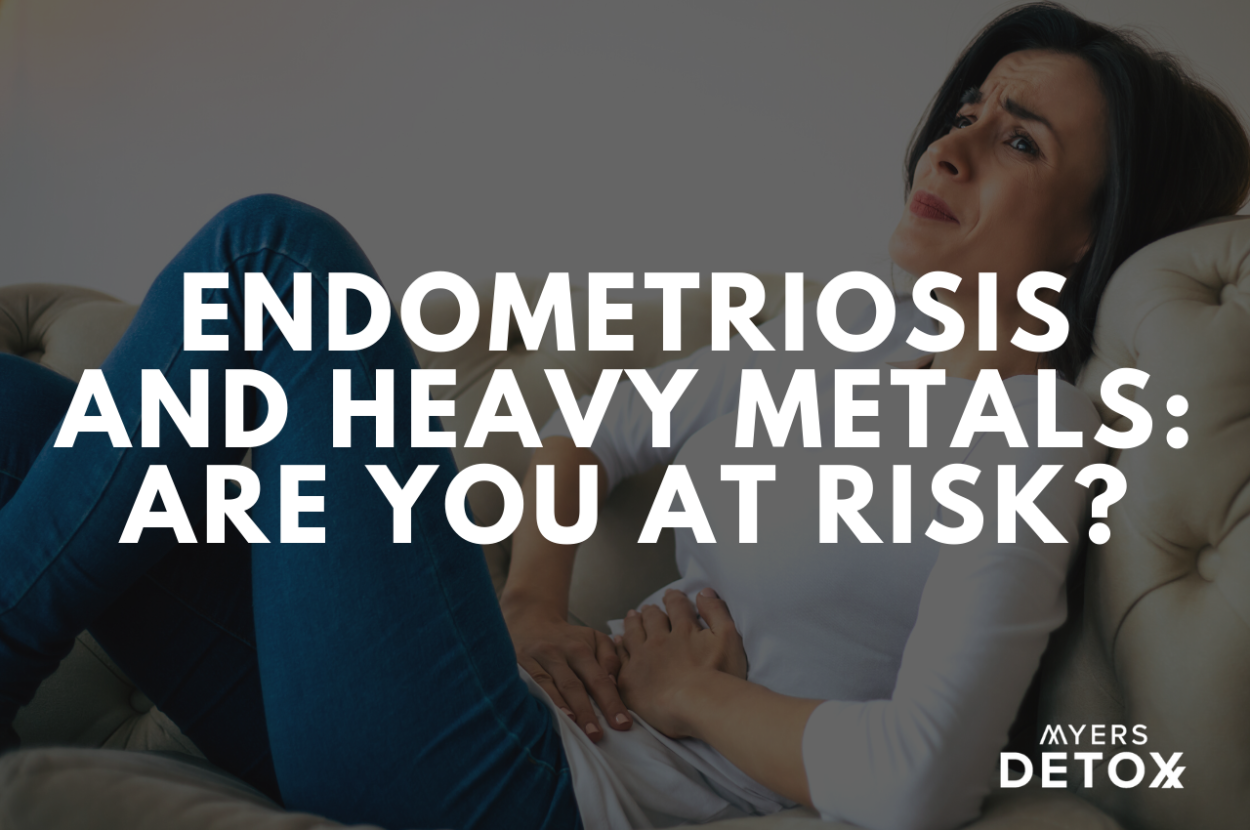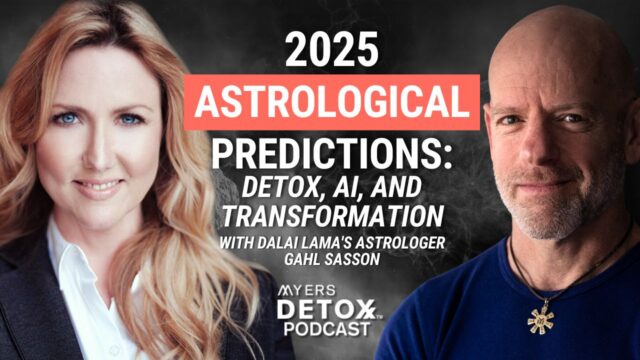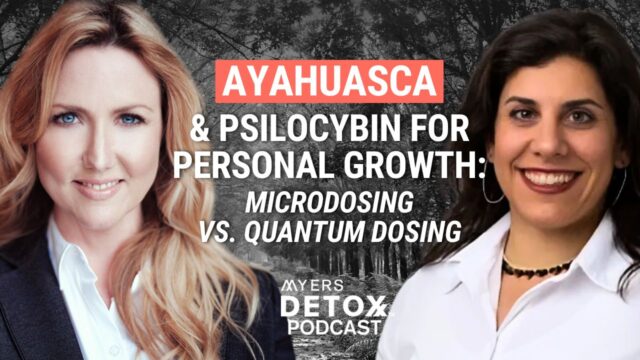Endometriosis is a frequently debilitatingly painful condition that affects about one in 10 women. While conventional medicine turns to medications and surgery at one end of the spectrum, and alternative medicine practitioners to an anti-inflammatory diet and supplements at the other end, one factor remains overlooked: the role of heavy metals and toxins in endometriosis. Some research even shows this link can even begin in utero.
What you’ll learn in this article:
- The impacts of heavy metals and toxins on endometriosis is believed to be in part due to their inflammatory effect and the fact that many are endocrine disruptors that mimic estrogen.
- The links between copper, cadmium, lead, and nickel and endometriosis.
- In terms of environmental toxins, the condition has been associated with BPAs in plastics, dioxins, PCBs, and perfluoroalkyl substances.
- One way to protect your reproductive and hormonal health is to support your body’s natural daily detoxification process with protocols that are simple, easy, and effective.
What is Endometriosis?
Endometriosis occurs when tissue similar to the lining of the uterus grows outside of the uterus, triggering an inflammatory reaction that causes pain and can leave scarring. This abnormal tissue growth is typically found on the lining of the pelvic and abdominal cavities, on the ovaries, on the tissue separating the rectum from the vagina, on the bladder, and on the large intestine.
Women with endometriosis often experience pain during menstruation, ovulation, with sex, as well as chronic pelvic pain. They also suffer from heavy bleeding, fatigue, and the psychological impacts from not only the pain but also from the intrusion of their symptoms on their ability to work, socialize, care for her family, maintain a sexual relationship, and so on.
The condition affects menstruating women and symptoms can start with a girl’s first period and continue after menopause due to the pain from scarring. It is also a cause of infertility.
To make matters worse, doctors frequently overlook or dismiss a woman’s symptoms of endometriosis. It takes years for the average woman to be diagnosed, despite the fact it’s nearly as common as diabetes. Instead, women are told period pain is normal, and lack of federal funding prevents adequate research and insurance coverage, making it an extremely expensive condition often requiring multiple surgeries for many women.
While surgeries, hormone therapies, and pain meds offer solutions on one side of the spectrum, and anti-inflammatory diets, lifestyle changes, and supplements on the other, it’s important to include daily detoxification habits into your care routine — studies show heavy metals and environmental toxins are linked with higher rates of endometriosis.
Heavy Metals and Endometriosis
Studies regarding heavy metals and endometriosis are inconsistent, though a few trends emerge. Endometriosis is recognized as an inflammatory condition and heavy metals and toxins can exacerbate this inflammation while depleting the body of its anti-inflammatory antioxidant reserves necessary to protect cells.
Lead, Cadmium, Nickel, and Endometriosis
Studies suggest that links between elevated levels of heavy metals such as lead, cadmium and nickel and increased risk of endometriosis could be a result of the inflammatory properties of these metals (1).
Cadmium is used in many industrial products such as rechargeable batteries and metal alloys, but fish, shellfish, cigarette smoke, and marijauna are also common routes of exposure.
Of the heavy metals that can disrupt hormone function, cadmium is the most studied and has been shown to promote endometrial tissue growth (4). Although research showing cadmium’s estrogen-like properties is persuasive, studies definitively linking it to endometriosis are not conclusive, with some finding an association and others not (5–7).
Many studies show links between cadmium and endometrial cancer — cadmium is an estrogen-mimicker, meaning it mimics estrogen and its effects on the body. Because endometriosis is an estrogen-dependent disease, an estrogen dominance, whether from endogenous estrogen or estrogen mimickers, can trigger and flare symptoms.
Studies have found cadmium, lead, and nickel present in ectopic endometrial tissue. In fact, one study showed that women with endometriosis had high blood levels of nickel compared to women who did not have the disorder (8).
Copper and Endometriosis
A similar potential mechanism was observed between a higher ratio of copper to zinc and increased incidence of endometrial polyps, growths on the inner wall of the uterus. A high ratio of copper to zinc suggests oxidative stress, or too many inflammatory and damaging compounds in the body compared to its protective antioxidant reserves (2).
High urinary levels of copper and chromium were also associated with increased prevalence of endometriosis (3).
Heavy metals can contribute to endometriosis when they mimic estrogens. This means they are molecularly similar to estrogen and compete with estrogen at cellular receptor sites, disrupting overall hormonal function and contributing to dysfunction and disorders. When heavy metals mimic hormones and disrupt hormonal function, they are called endocrine disrupters (endocrine means hormonal).
Environmental Toxins and Endometriosis
Our environment contains tens of thousands of man-made chemicals, only a small handful of which have been studied. Over the years, researchers have established that some of the most common synthetic chemicals in our environment are endocrine disrupters, meaning they play a role in disrupting normal hormone function and contributing to hormone-base disorders such as endometriosis.
Organic Pollutants and Endometriosis
One study looking at levels of several organic pollutants in fat tissue found significant associations between endometriosis and these toxins, in particular octachlorodibenzofuran (OCDF) and cis-heptachlor epoxide (9), two chemicals used in pesticides.
Studies show these toxins can contribute to endometriosis before you’re even born by impacting the endocrine systems of pregnant women and their fetuses (10, 11).
Dioxins and Endometriosis
Dioxins, a byproduct of industrial processes, enter the human body primarily through the food chain and have been shown to play a role in endometriosis (12). It’s believed that dioxins may promote endometriosis by promoting hormonal imbalances through inflammatory mechanisms (13).
Women with diabetes in particular are more vulnerable to an increased risk of endometriosis when they have elevated levels of dioxins in their system. This likely stems from the fact that diabetes significantly increases inflammation and lowers the body’s protective antioxidant reserves (14).
PCBs and Endometriosis
Polychlorinated biphenyls (PCBs) were used in industrial processes in the United States until the 1970s, however they persist in the environment and are still used in other countries. PCBs have been suggested to increase the risk of endometriosis in a variety of studies (15, 16). As with dioxins, diabetic women with endometriosis showed significantly higher blood levels of PCBs than controls (17).
BPA and BPAF and Endometriosis
Bisphenol A (BPA) and bisphenol AF (BPAF) are well known endocrine disrupters used in plastics and many other products that have been linked to a number of health disorders, including endometriosis, in both animal (18) and human studies (19–21). In some research BPAF appears to be more estrogenic than BPA (22).
Perfluoroalkyl Substances (PFASs) and Endometriosis
Perfluoroalkyl substances (PFASs) are industrial chemicals ubiquitous in our environment and that are known endocrine disrupters. In a sample of more than 750 women, those with endometriosis had significantly higher levels of PFASs (23). Another study a year later of women seeking treatment for infertility, those with endometriosis had higher levels of PFASs (24).
What You Can Do to Support Your Natural Detox Pathways and Protect Your Reproductive Organs
Toxic heavy metals and environmental compounds are ubiquitous in our environment. We need to use safe and natural tools daily to support our body’s natural detoxification process and keep ourselves healthy.
To protect your reproductive and hormonal health from absorbing environmental pollutants, follow this four-step process:
- Mobilize heavy metals and toxins from body tissues
- Bind them so they don’t lodge elsewhere in the body
- Support the body’s pathways of elimination so they immediately leave the body
- Mineralize the body so heavy metals and toxins don’t take the place of valuable minerals due to deficiency.
First I start with CitriCleanse. This is an all-in-one formula that only requires one scoop daily in water to support the body’s natural excretion of harmful pollutants. Made from pure ingredients, it is amazingly effective at aiding your body’s innate ability to mobilize toxins and heavy metals, help flush them from the body, and mineralize your tissues.
My clients who use CitriCleanse report more energy, better sleep, improved digestion, heightened mental clarity, and improved hormone function.
CitriCleanse is highly unique for three key reasons:
Fulvic humic acid: Fulvic humic acid provides your tissues with minerals, which then supports the removal of environmental contaminants, so they’re not competing with thyroid hormones.
Cilantro extract: Cilantro extract supports the body’s natural detoxification pathways in its removal of mercury, cadmium, lead, and aluminum from your cells, tissues, bones, and nervous system.
Grapefruit pectin: Grapefruit citrus pectin has been processed in a way that makes its molecules small enough to cross the intestinal barrier and to get into the bloodstream. This allows the grapefruit citrus pectin to gently surround and support the excretion of pollutants that are both freely circulating in your bloodstream as well the ones that have become lodged in tissues and organs. I only use the purest modified citrus pectin (MCP) available—other products often use brown algae as fillers to lower cost (and effectiveness).
If you’d like to learn more about supporting your body’s ability to detox, click here.









